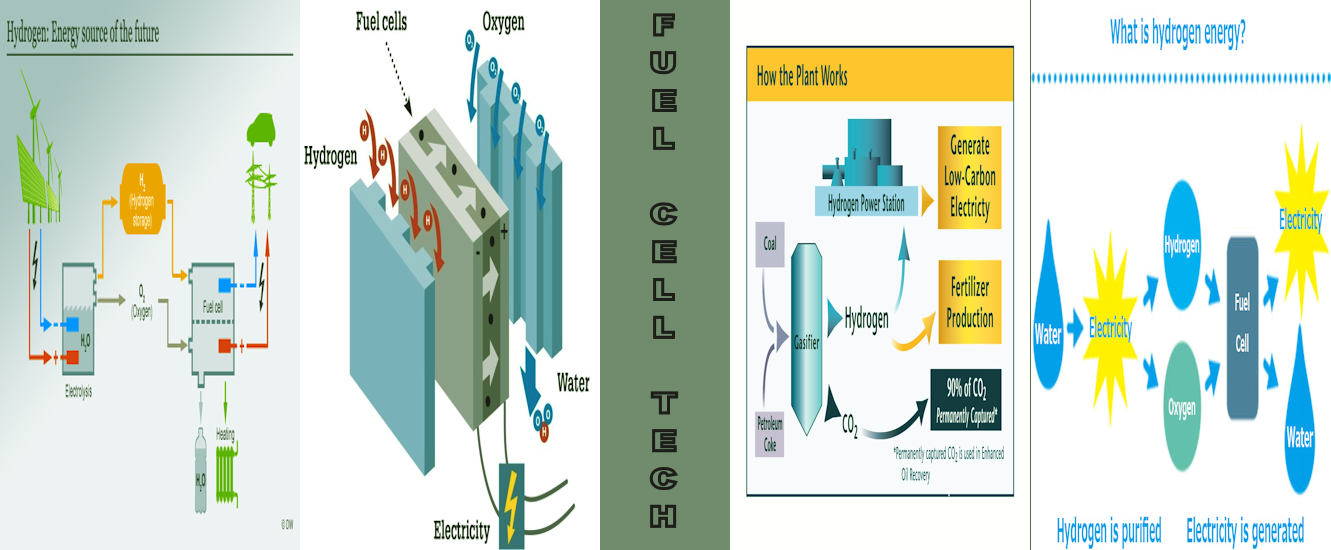Fuel Cell Technology
Fuel cell technology has been around for about 15 years. The advances made include fuel cell powered cars and trucks and even heavy machinery. It is clean and will reach a point that it becomes cheaper then gasoline. This is not hard to imagine considering that Hydrogen is one of the most abundant elements in the universe.
Generating new clean alternative energies is moving as fast as the world is evolving and fuel cell technology is right at the head of the pack.
A fuel cell is a form of battery. It generates electricity from the simple and abundant hydrogen and oxygen found in chemical compounds all around us. What makes it special is: a hydrogen fuel cell’s exhaust is nothing but water. This makes it ideal for moving forward in a carbon free environment
Ther are many vehicles that are hydrogen fuel cell electric vehicles (FCEVs). They produce no emissions except water from the tailpipe These vehicles store hydrogen in a compressed form rather than in a battery. The hydrogen fuel cell converts the hydrogen into electricity to power the engine.
Here is how it works:
Hydrogen gas is fed into one side of the fuel cell, and air, which contains oxygen, is fed into the other. Hydrogen passes through the layers of the fuel cell, and as this happens, it induces a positive and a negative charge, which generates an electrical current. Finally, the hydrogen is combined with the oxygen and reacts to form H2O, better known as water.
Hydrogen itself is not a fuel but a fuel carrier. That means that energy from another source can be used to extract the enrgy in Hydrogen and then the Hydrogen stores that energy till it is required.
One way to do this is by the above mentioned process which is known as splitting water another way is by a process called reforming where they extract Hydrogen from natural gas. Both of these processes require the use of energy but once extracted the Hydrogen produces clean, environmentally friendly energy.




